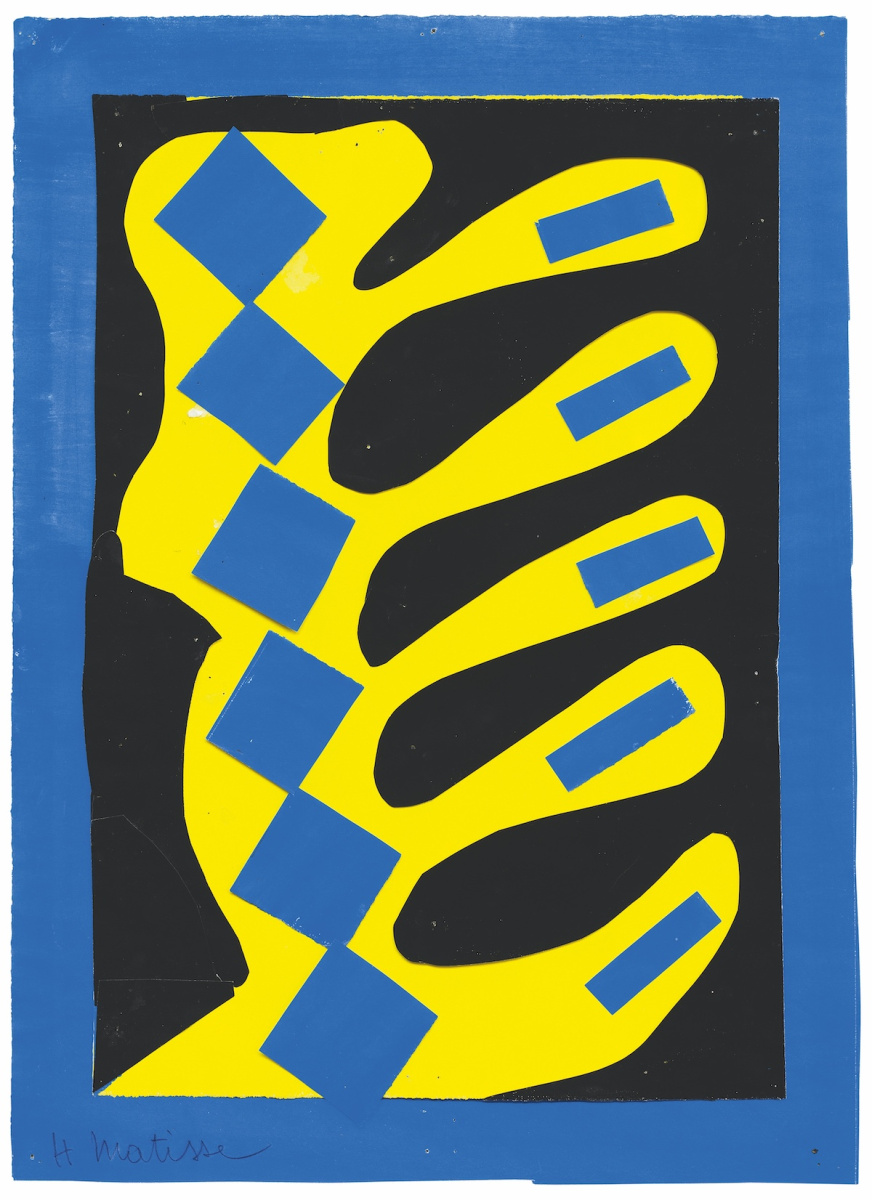Gouache on paper, cut and pasted
47 × 34 cm
Hilti Art Foundation, Schaan
Matisse initially used cut-outs as an aid in designing stage sets, wall paintings and covers but they gradually outgrew their secondary, applied function and became part of his oeuvre as an independent genre. Thanks to its perfected development, the result of prolonged experience and, according to the artist, a perfect synthesis of drawing, painting and sculpture, the technique constitutes a late work that is incomparable in the history of 20th century art. In this genre Matisse unites classical form with a decorative and indeed light-hearted, cheerful approach.
Composition, Jaune, Bleu et Noir is an autonomous, non-figurative work. The shape in the middle of the picture does suggest something vegetable, like most of the forms in the cut- outs that Matisse mounted on the wall of the Villa le Rêve in Vence, where he lived and worked from 1943 to 1948. They are a reflection not only of the lush flora that the artist encountered on a trip to Polynesia in 1930, but of his relationship to nature in general. In his cut-outs, he was always seeking aesthetically simplified equivalents for nature's diversity and rhythm.
As shown in a photograph of 1948, Matisse had originally included this work in the numerous, densely arrayed cut-outs mounted on the wall of a room in the Villa le Rêve. But a year later, as indicated in another photograph, he had already separated and framed them for the exhibition Henri Matisse: Œuvres Récentes 1947–1948 at the Musée National d'Art Moderne in Paris. This cut-out also appears in a third photograph taken at Galerie Berggruen in Paris in 1953. Heinz Berggruen was the first and only dealer to exhibit Matisse's cut-outs in his lifetime.
Uwe Wieczorek
"We of to-day are trying to express ourselves to-day – now – the twentieth century – and not to copy what the Greeks saw and felt in art over two thousand years ago."
Henri Matisse
Clara T. MacChesney, A Talk with Matisse, 1912, in: Jack D. Flam, Matisse on Art, E. P. Dutton, New York, 1978, p. 52.
